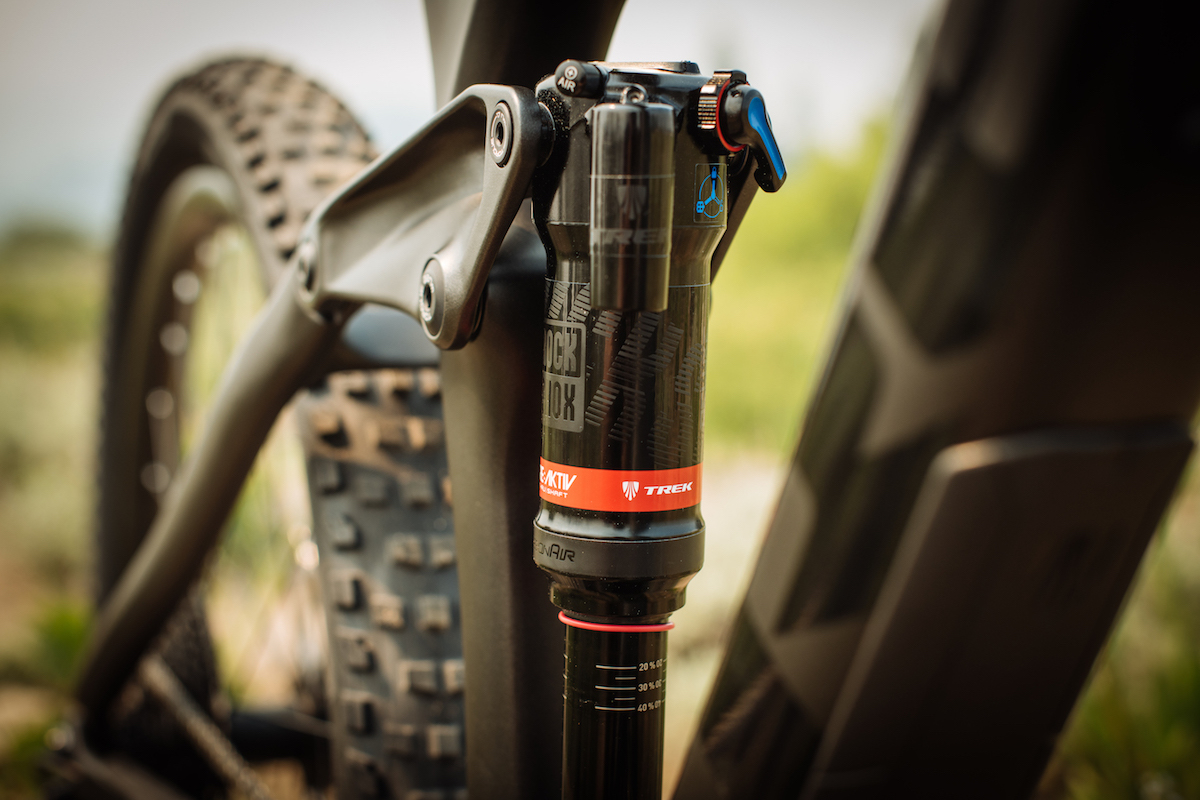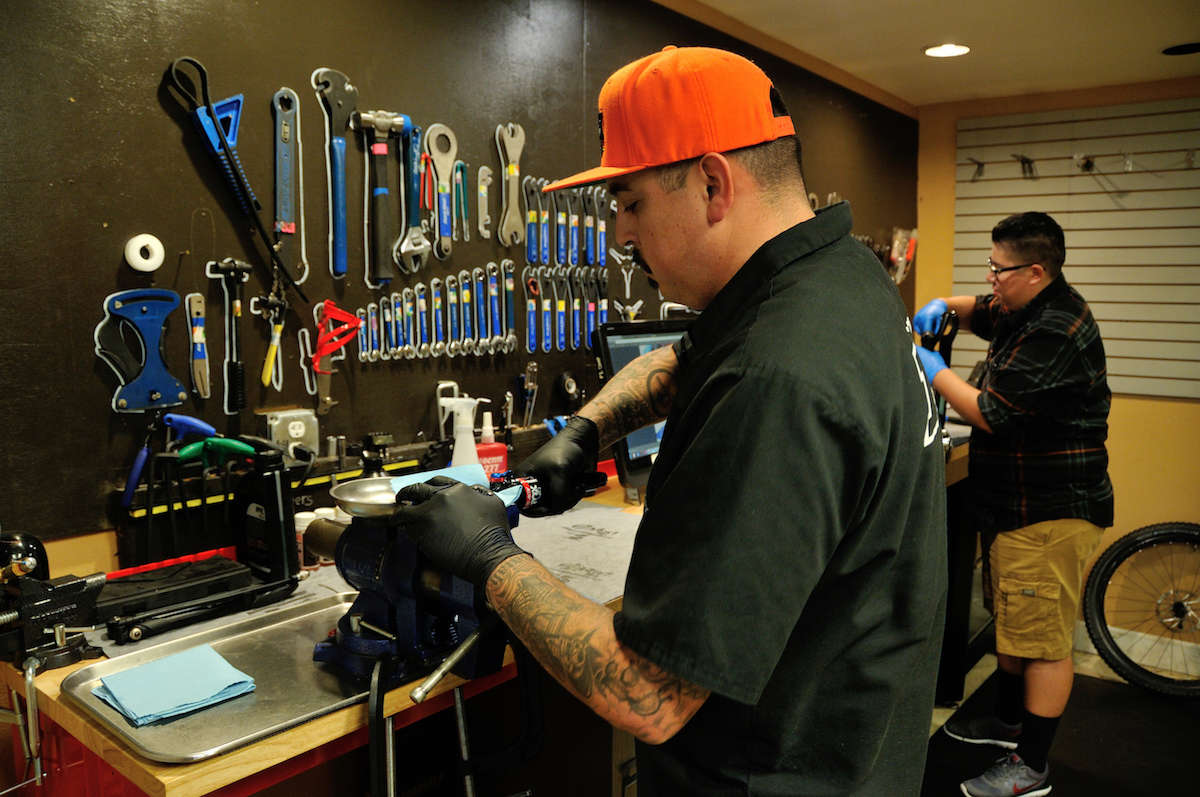Caring for Your Mountain Bike Suspension
November 6, 2022

Regular suspension service = less friction = more traction = more control!
Keep the Cush Fresh with These Tips
It’s a well-established fact that proper maintenance is key to the health and longevity of anything with moving parts. Yet, how often do we find ourselves procrastinating on bringing our car in for an oil change, or making an appointment to have our cholesterol checked?
Oftentimes it’s sheer lack of knowledge that keeps us from properly caring for ourselves and our things. And even when we do seek accurate information, it’s crazy how many different opinions or “facts” are out there.
Well, we’re here to help set the record straight on mountain bike suspension maintenance anyway!
We have two highly experienced suspension service technicians — Joel Rocha and Jose Perez — on our crew, and we asked for their input in pulling together this helpful guide to understanding your suspension and how to properly take care of it. Their expertise will help you keep your fork and rear shock running as good as new … perhaps even better! Who doesn’t love the feel of buttery suspension?
Suspension 101
This article focuses on the care and keeping of suspension, with the assumption that your suspension functions (sag, rebound, compression) have been set up properly for your weight and type of riding. And, of course, that your bike is equipped with the right amount of travel for the type of riding you enjoy. (Stay tuned for more about all this in a future post.)
If you’re not sure if you’re set up correctly, come by and we’ll dial you in!
Following is some basic information about how the fork (front suspension) and rear shock (rear suspension) work.
THE FORK
Your front suspension is delivered via the fork. This wonderfully springy piece of equipment is comprised of an air or coil spring which gives your fork its resisting force (read: squish), and a hydraulic fluid-filled damper which controls the fork’s compression and rebound (squish and un-squish). To help you envision how this works, the damper keeps your fork from feeling like a pogo stick. Squish, yes please. Bounce, no thanks.
Fun Fact: Air springs are most common on cross-country, trail, and most all-mountain bikes, while coil springs are typically found on downhill bikes as well as some all-mountain models.
The air or coil spring and the damper each reside within a stanchion. These two tubes are part of the “uppers” which also contains the steer tube (connects the fork to the bike) and crown (connects the stanchions to the steer tube).
Meanwhile, the “lowers” — which connect the fork to your wheel — house the fork’s bushings and lubricating oil. The magic happens when the uppers make contact with the bushings in the lowers: as your front wheel takes on rough terrain, the bushings slide up and down for that buttery smooth feel.
And let’s not overlook the small but mighty dust wipers and foam rings. Dust wipers protect the inside of your fork from dust, dirt and grime, while foam rings increase lubrication by keeping oil close to the seals and bushings. Keeping these crucial parts clean, lubricated, and replaced as needed is obviously very important.
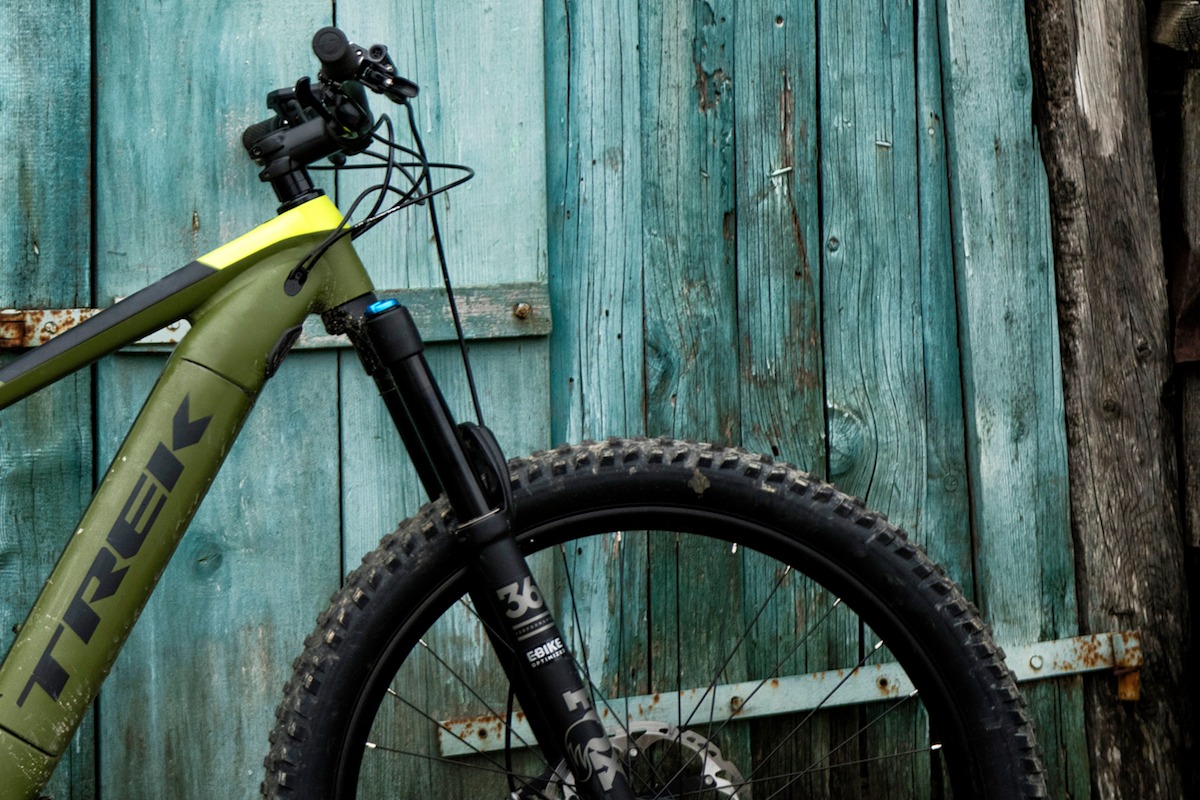
Full suspension and hardtail mountain bikes feature forks that deliver the right amount of squish for the type of riding the bike is designed for.
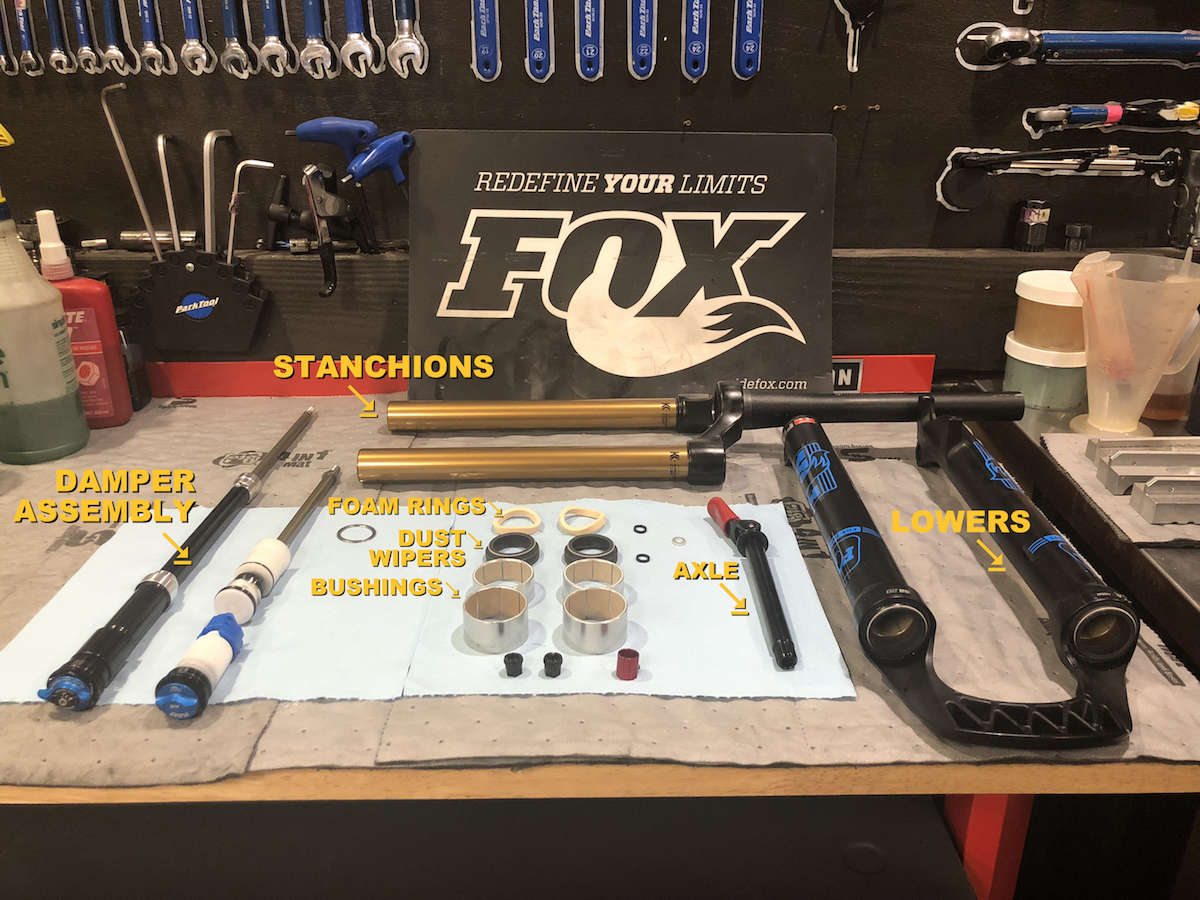
The outer and inner workings of a FOX fork.
THE REAR SHOCK
Full suspension bikes boast a rear shock which allows your back wheel to soak up impacts. This provides you with even more comfort and control.
Just like the fork, the rear shock contains an air or coil spring as well as a damper. The difference, though, is since the rear shock is much smaller than the fork, these components reside together, usually with the damper encapsulated by the spring.
Also as with the fork, the rear shock is comprised of many smaller parts such as seals which are important to keep clean, lubricated, and replaced as needed.
Full suspension mountain bikes feature rear suspension for optimum comfort and control.
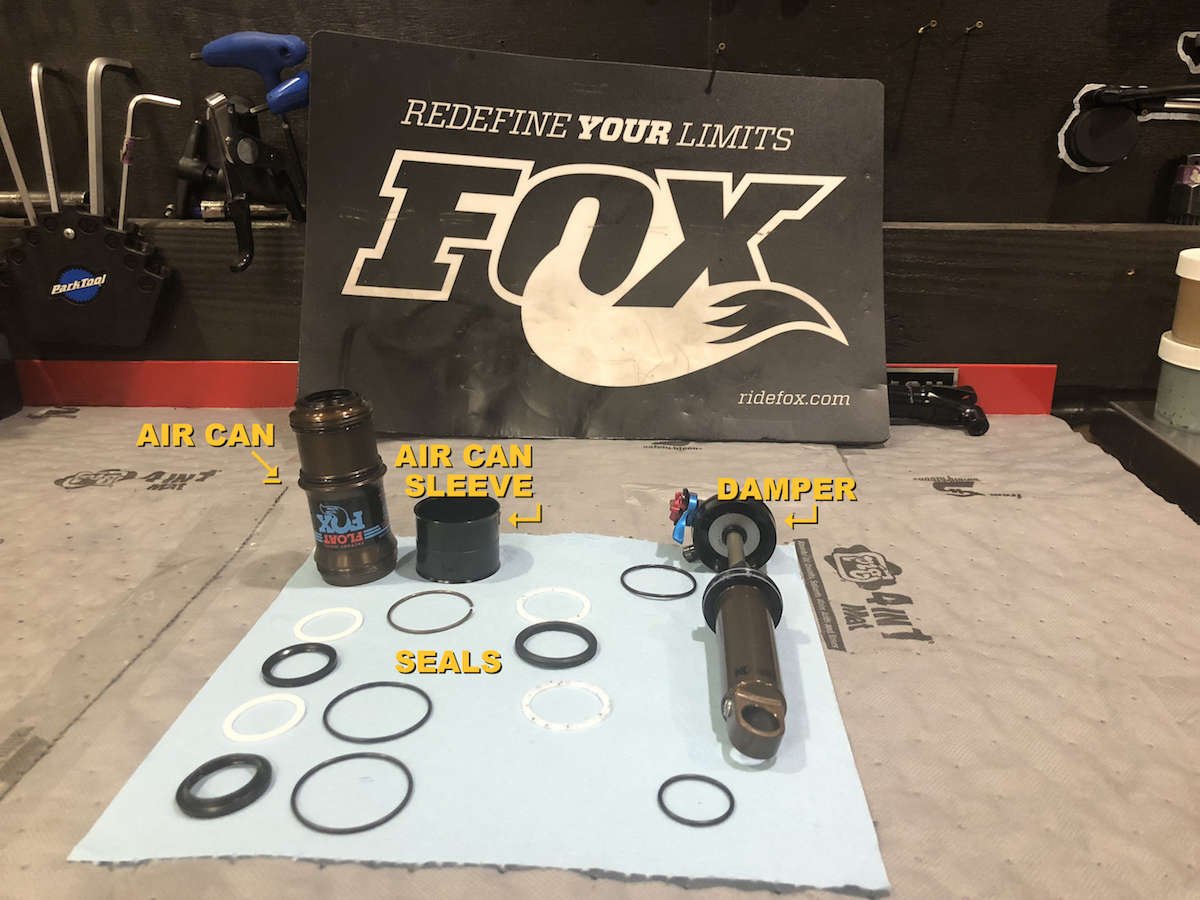
The outer and inner workings of a FOX rear shock.
What You Can Do at Home
So, when exactly should you service your suspension, and what does that entail? Superior suspension will smooth out the roughest trails, but it’s important to keep in mind that the more wear-and-tear, the more often your suspension will need attention.
Here are some things you can easily do at home to protect your investment:
CLEAN YOUR FORK AND SHOCK AFTER EVERY RIDE
Completely clean your fork and rear shock after each and every ride. Use mild soapy water, rinse with a very light pressure water spray (taking care not to spray water directly at the seal/upper tube junction), and wipe dry with a clean soft cloth.
Do NOT use any solvents or degreasers as these can damage exterior finish and anodized parts.
If you don’t have access to water, at the very least wipe off the dust wipers and seals after your ride.
TURN YOUR BIKE UPSIDE DOWN
You can also turn your bike upside down now and then for about 20 minutes at a time. Although the foam rings work their lubricating magic just fine, turning the bike upside down can help keep those upper bushings lubricated.
INSTALL A MUDGUARD
To protect the stanchions from dirt and dust thrown up by the front wheel, you can install a mudguard below the fork arch.
INSPECT YOUR STANCHIONS REGULARLY
Finally, be sure to inspect your stanchions before and after every ride for scratches as this sort of damage can carry dirt to the inside of the fork. Stanchion scratches are a 911 — bring your fork in right away to be fixed.

Inspect and clean your stanchions after every single ride.
When to Get Your Fork and Shock in for Service
Keep your rides smooth and safe by being proactive about professionally servicing your fork and shock. Suspension service is similar to keeping the oil changed in your motor vehicle. Naturally, the more frequently you take care of this vital maintenance, the better your fork and shock will perform.
Don’t wait until you notice a lot of grit, grime and other build up around your seals to get your suspension serviced. And certainly don’t wait ‘til it feels like you’re riding a jackhammer.
In addition to keeping your suspension running like new, timely maintenance will save you hundreds of dollars in the long run, as fresh oil and seals prevent the bushings from wearing into the stanchions. Did you know that forks cost up to $1,000 to replace, and that stanchions alone can cost $500?
Clearly, regular service is your first line of defense in protecting your investment.
Crew Tip: Don’t rely on your memory to track the time you put on your suspension. Get in the habit of marking your riding hours on a calendar or white board hung where you park your bike between rides.
Timely maintenance will save you hundreds of dollars in the long run, and keep your bike running super smooth.
FOX
FOX recommends a complete overhaul of the fork and shock every 125 riding hours, or yearly, whichever comes first. Of course, if you tend to ride aggressively, or in especially muddy or dusty conditions, you should get service sooner.
A fork overhaul involves a thorough inspection of the fork for wear and damage; a complete teardown and rebuild of the damper, including new seals and oil; new dust wipers and foam rings; air spring rebuild; bushings replaced if needed.
A shock overhaul involves a thorough inspection of the shock for wear and damage; a complete teardown and rebuild of the damper, including new seals and oil; and new air sleeve seals if needed.
ROCKSHOX
RockShox service recommendations are a little more complicated, as they are model-specific. Basically, RockShox recommends that the fork lowers and shock air can be serviced every 50 riding hours, and a complete overhaul be done between 100-200 hours depending on the model of your fork or shock.
Therefore, you would bring your fork and/or shock in for “basic” service at least once between 100-hour overhauls, and three times between 200-hour overhauls. Check this RockShox chart for details.
For the fork, lowers (aka “basic”) service involves inspecting and cleaning the lowers and stanchions, replacing the dust wipers and foam rings, and replacing the oil. An overhaul involves a thorough inspection of the fork for wear and damage; a complete teardown and rebuild of the damper, including new seals and oil; new dust wipers and foam rings; air spring rebuild; bushings replaced if needed.
For the shock, the air can (aka “basic”) service involves replacing the air sleeve seals and float fluid. The overhaul involves a thorough inspection of the shock for wear and damage; a complete teardown and rebuild of the damper, including new seals and oil; and new air sleeve seals if needed.

Happy bike = happy rider.
In Conclusion
Making regular maintenance a priority will make your product last longer and in the long run you will get much more value out of it. And the icing on the cake is that sweet, buttery “better than new” feel you’ll enjoy on the trails!

